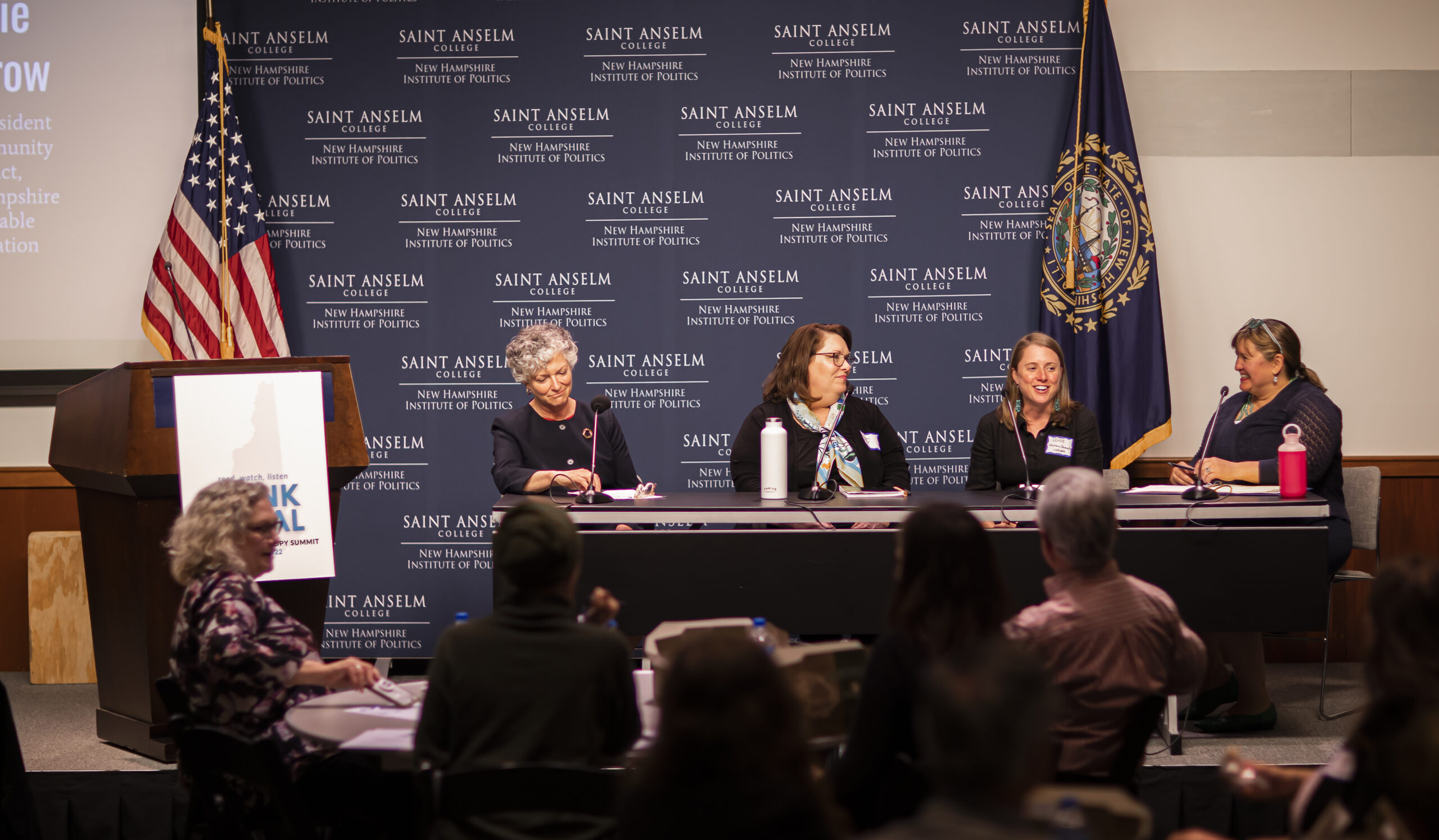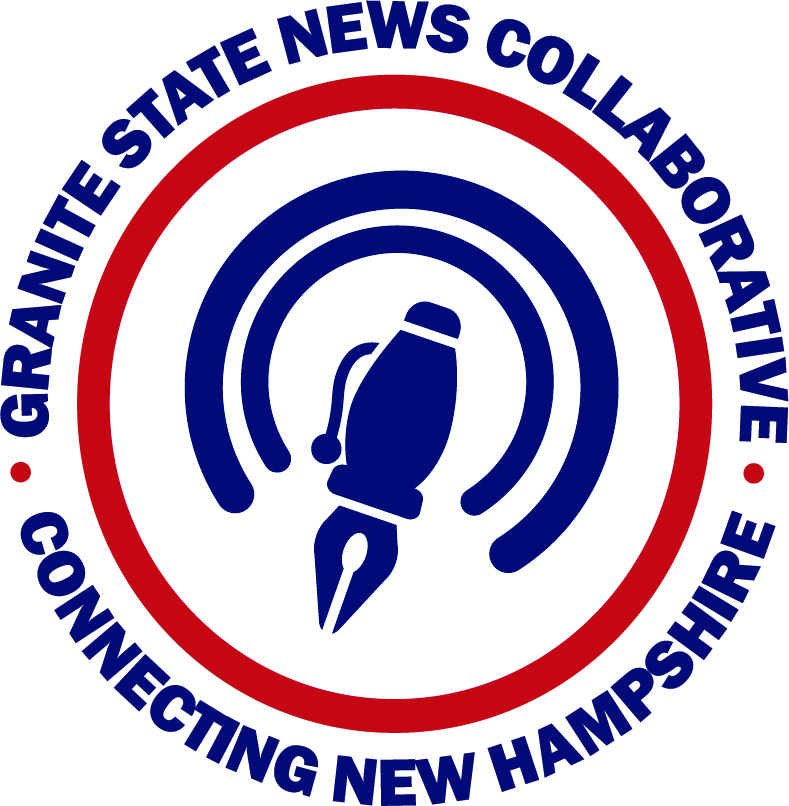
MANCHESTER, NH – At a time when information flows more freely than ever, the local news industry finds itself at a crossroads.
Related Story: What happens when local news goes dark?
The advertising and subscription model that held up the industry for so long has consistently been chipped away over the past two decades. The financial challenges have only accelerated over the past few years with the pandemic, and more recently with new pressures from inflation. Across the nation and here in New Hampshire, that’s meant far fewer reporters to dig into local and statewide issues. And in some communities, it’s meant no reporter or news publication at all.
Report for America, a national service organization that helps local newsrooms add to their reporting staffs, says the slow decline of the local journalism business model has a far-reaching impact.
“We’re facing a colossal collapse in local news across the country,” said Lauren McKown, senior vice president of development for Report for America and The Ground Truth Project. “A crisis in local news is a crisis in democracy.”
McKown was speaking last week at the New Hampshire News Philanthropy Summit at the New Hampshire Institute for Politics at Saint Anselm College. The event brought together about 70 journalists, business leaders and philanthropic funders to begin the discussion on how local news, trustworthy information, civic engagement and community need to align.
The event served as the next step in the New Hampshire news industry’s recent efforts to bring more reporting and more journalists to the state with innovative partnerships and a newfound spirit of collaboration.
“I believe developing new ways to fund journalism will be key to ensuring its sustainability,” said Steve Leone, vice president of Newspapers of New England and publisher of the Concord Monitor, where two of the staff’s five news reporting positions are currently 100 percent funded by nonprofit support and community donors.
That’s part of the turnaround story in New Hampshire, where many news organizations are forging partnerships with community donors in order to sustain local journalism into the future and underwrite in-depth coverage of important issues facing our communities and the state.
“Leaders in business, philanthropy, higher education, and journalism have a responsibility to come together to help solve this,” said Melanie Plenda, director of the Granite State News Collaborative, a statewide nonprofit of about 20 media organizations. “And we’ve already started that work. Media outlets across the state that used to compete with each other for ads and eyeballs are now actually co-reporting and sharing articles with each other for distribution, all so that our communities have more of what they need.”
“This is about recreating a piece of the fabric of democracy and community,” said Laura Simoes, executive director of the Nackey S. Loeb School of Communications, which co-sponsored the event with the Concord Monitor and the Granite State News Collaborative. “We get to chart a new course and find fixes to problems that involve all of us.”
Many of the funders in attendance agreed, though they also admit they’re among the early adopters in believing that philanthropy has a role to play in supporting local newsrooms. Katie Merrow, vice president of community impact at New Hampshire Charitable Foundation, sees local journalism as a critical piece to promoting community health.
“We’re just continuing our mission,” said Merrow. “It’s a natural extension of the way we work in community…. None of us has the scale to fix all these problems. Journalism is high leverage because it gives people information and understanding to act and act now,” she said.
Merrow also pointed out that the system of local journalism, although very challenged, continues to have deep penetration across the state and it’s critical to keep it going.
“If we let it die and then have to rebuild it. That will take far more resources,” she said.
An industry in crisis
The story of American journalism is best told in numbers.
Surveys indicate that 75 percent of local readers and news consumers believe their local news organizations are doing well, said Leah Todd Lin at the Solutions Journalism Network. But national journalism studies tell a far different story.
According to research led by Penelope Abernathy at the University of North Carolina, there are 225 counties in the United States that do not have a local newspaper. Half the counties in America have just one, and it’s usually a weekly publication. New England has 10 counties with only one paper and three with no publication at all. This barren landscape has led to the rise of the term “news desert.”
A look at the national “news desert” map shows a patchwork of communities that have little to no news coverage. These are predominantly in rural areas because they don’t have the local economies capable of supporting a paper through advertising. So community members get less news. That, studies say, also means municipal spending generally increases because no journalist is at the public meetings to report the news. In these areas, a town’s borrowing costs can also go up and voting turnout can also suffer.
According to national research on the crisis in local news by Report for America founder Steve Waldman, approximately $1 billion to $3 billion is needed each year to build and sustain the nation’s news system. This sounds like a daunting sum, said McKown at Report for America, but research shows that Americans collectively donate about $450 billion a year. A funding shift of 0.2 to 0.25 percent is needed to support local news.
A sampling of solutions
At a time of industry upheaval, consolidation and widespread newsroom closures, philanthropy is emerging as a way to bring critical issues to readers.
The Loeb School, a Manchester-based non-profit dedicated to preserving freedom of speech and freedom of the press, connects nonprofit and for-profit newsrooms to grants – including for solutions journalism projects such as “What’s Working” at the Union Leader, which focuses on workforce, employment and economic issues confronting the state, communities and business; the Monadnock Region Health Reporting Lab at the Keene Sentinel; and “The Sunshine Project” and “Voices” at the Laconia Daily Sun.
“A lot of us have built (grant funding) into our business model,” said Mike Cote, managing editor for news and business at the Union Leader and New Hampshire Sunday News, which has six full-time news reporters for local and statewide coverage. “The hardest part is keeping the momentum going. A lot of people don’t realize how small our newsrooms have become.”
Because of the reach and success of “What’s Working,” the Union Leader is seeking and linking sources to continue funding.
“The number of journalists we have lost in the last 15 years is astounding,” said Leone at the Monitor about New Hampshire journalism. That underscores the need for outside support to supply local coverage.
Funding from Report for America and the New Hampshire Charitable Foundation enabled the Monitor to hire a full-time education reporter who started in 2020, and St. Paul’s School will begin support for that position in June, according to Leone. A full-time health reporter was funded through May 2022 by Report For America, Concord Hospital, Granite VNA, Concord Imaging, Riverbend Community Mental Health Center and NAMI NH, and the paper is building a new round of support to relaunch the coverage later this year, he said. Next month a new Report for America position focused on disparity issues will be funded jointly by RFA, Northeast Delta Dental and Merrimack County Savings Bank.
Funding through local and national grants and major and individual donors has enabled the Granite State News Collaborative, with an army of freelancers and partners in roughly 20 New Hampshire news outlets, to generate approximately 650 in-depth, investigative, solutions-focused stories since March 2020, said Plenda.
The pandemic and the current political climate boosted the demand for trustworthy coverage, journalism experts and funders agreed.
We’re “unified in our mission to provide good, rigorously reported and vetted journalism,” Plenda said, including through recent grant-funded projects on race and equity and restorative justice. “I see us competing with the loudest and most repetitive voices, whether on CNN or social media. People see local news as less polarized and more trusted. We’re doing our part to get good information to people.”
“People are used to finding any information they need with a click of a button, and many don’t discern between a real news source and a blog or someone’s opinion, which is a threat to democracy,” said Julie Hirshan Hart, co-editor of the Laconia Daily Sun, where solutions journalism projects “Voices” and “The Sunshine Project” have spotlighted public health, mental health, social issues, civic discourse and the experience of youth during the pandemic. “We’ve seen that grant funding can help us fill the gaps and create a sustainability plan so we can keep delivering quality, real journalism to our community and the state,” she said.
It’s important to find funders with “unity of purpose ”and to align reporting with community needs that are important, said Terrence Williams, CEO of the Keene Sentinel, the country’s fifth-oldest continuously running newspaper, founded in 1799. Local problems with health care access, cost and depth-of-care were revealed in community listening sessions, which sparked the creation of the Health Lab and defined its coverage mission.
The Sentinel recently hired a statehouse reporter through crowdfunding. Two more philanthropy-supported reporters are starting at the end of May at the online and print news outlet, which serves readers in western Hillsborough and Cheshire counties and southeastern Vermont, Williams said.
“Solutions journalism is, by definition, not just looking at a problem, but finding who’s doing things that are working,” said Cote at the Union Leader. Without funders, “It’s harder for New Hampshire community newspapers to delegate a reporter to a topic for a year.” With outside support, the journalism remains independent, he explained. “In five years, there’s never been an issue with influencing coverage in any way.”
Eyes on NH
The goal for local media now is to attract renewable contributions from a wide range of sources, including community and business leaders such as doctors, lawyers, local car dealerships, drug stores and manufacturers, as well as foundations, grant funders, large corporations, health care systems and individuals.
News philanthropy offers non-profits and for-profits a way to strategically extend their impact and reach, the speakers said.
“The Endowment started its media partnerships through underwritten coverage on specific issues,” said Karen Ager, director of communications for the Endowment for Health. “Over time, we realized we couldn’t fund every good idea coming out of NH newsrooms, so our current strategy includes capacity support to sustain the practice of solutions journalism statewide.”
These solutions are forming the foundation for long-term sustainability in New Hampshire, said Leah Todd Lin of the Solutions Journalism Network.
“I’m based in Lebanon, but my work is national. So I really have the chance to talk to a lot of newsrooms, a lot of news leaders and a lot of funders, people who are interested in supporting local news all over the country,” Todd Lin said. “And so my message to people out of the state of New Hampshire is always: ‘look at what New Hampshire is doing.’…And when I’m in the state, like today, my message is: ‘I hope you you know what you have here and how special it is.’ ”
McKown and Report for America have also picked up on the approaches being taken in the state, touting the mix of newsroom collaboration, philanthropy and business partnerships.
“You have all the ingredients here to have a strong future for your state. Local (news) is really at the heart of this,” said McKown.
 This article was shared by The Granite State News Collaborative. For more information visit collaborativenh.org.
This article was shared by The Granite State News Collaborative. For more information visit collaborativenh.org.







